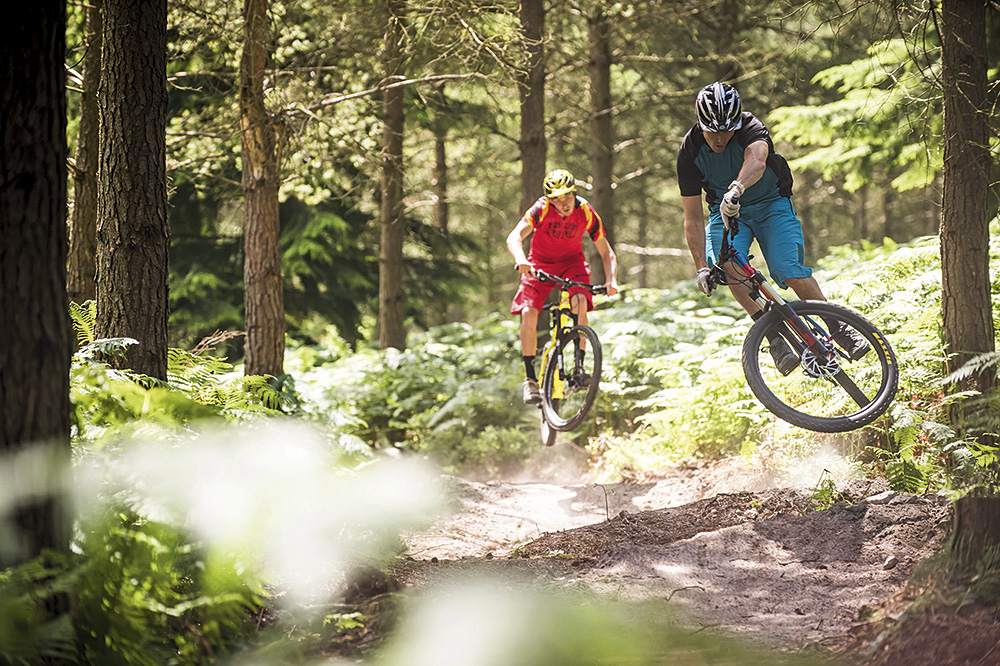The newest 650b (27.5in) hardtails on the market go head to head, offering improved roll-over performance and playful characters
With 650b rapidly replacing 26in as the go-to wheel size, it presents the perfect opportunity to discard dogma and start afresh with new ideas and geometry. And if the end results are bikes that perform better than before, the growing pains of change will no doubt quickly be forgotten. In fact, 650b bikes nearly stole the show in our 2014 Bike of the Year test, with Whyte, Vitus and YT Industries all performing well with 27.5in wheels.
We expect performance to rival or better the very best entry-level suspension bikes
Up until now, most of the development with 650b has been focused on full-suspension bikes, but we’re starting to see the ‘tweener’ wheel size make inroads into the trail hardtail category too.
So this month we’re taking a closer look at two brand new 650b hardtails: the Bird Zero.1 and the NS Eccentric. Both are designed around 140mm-travel forks, bolt-thru back ends and 2×10 drivetrains, so they are about as modern as hardtails get.
The Bird Zero.1 uses a lightweight aluminium frame, while NS has opted for a more artisan approach, crafting the Eccentric out of 4130 steel tubing.
Both bikes cost £1,600, placing them at the upper end of the hardtail price spectrum, so we’ll be expecting performance to rival or better the very best entry-level suspension bikes. Read on to find out if they deliver.
Bird Zero.1 review
New direct-sales mountain bike brand Bird ruffles some feathers with its killer value 650b hardtail
NS Eccentric review
NS has entered the trail bike market with the Eccentric, a beautifully crafted steel hardtail with 650b wheels and a…
Conclusion
Coming into this test, we were hoping to find two new 650b trail hardtails that really stood out. After all, 650b wheels offer improved rollover compared to 26in, so it makes sense to embrace modern geometry to match the speed gains on offer. Instead, what we discovered is that most brands like to play it safe.
Granted, the 67° head angles on the NS and Bird can’t be considered XC racing steep, and on the face of it they are in line with plenty of 140mm-travel 650b suspension bikes. The problem is that hardtails don’t compress at both ends when you sit on them or load them up in a corner. Instead, they pivot around the rear axle and only the fork compresses. It sounds obvious, but that’s why hardtails actually need slacker head angles than full suspension bikes, and why they don’t always benefit from more travel up front.
It sounds obvious, but hardtails actually need slacker head angles than full suspension bikes
One brand that has worked this out and put it into practice is Whyte. When we awarded full marks to the Whyte 905 back in January as part of our trail hardtail group test, we measured the head angle at 65.7° with a 130mm fork. That might sound crazily slack, but when combined with the 303mm BB height, it felt amazing out on the trail. Why? The answer is simple. When you get on the bike and your weight causes the fork to compress into its sag, the geometry steepens up to be roughly the same as a good 140mm-travel full-susser. As such,
it can be ridden every bit as hard, even if it’s going to be tougher on your body without the
rear suspension.
It’s worth pointing out that the sizing was better on the Whyte too. We tested a size medium and the down tube measurement and front centre were both very similar to the size large NS Eccentric, which was the more generous of the two bikes in this test. If you want to go even bigger and run a really short stem on the Whyte you have plenty of room to manoeuvre, as the 905 is also available in large and extra large sizes.
Geometry lesson over; where does that leave the new Bird Zero.1 and NS Eccentric? Playing catch-up to the excellent Whyte 905.






